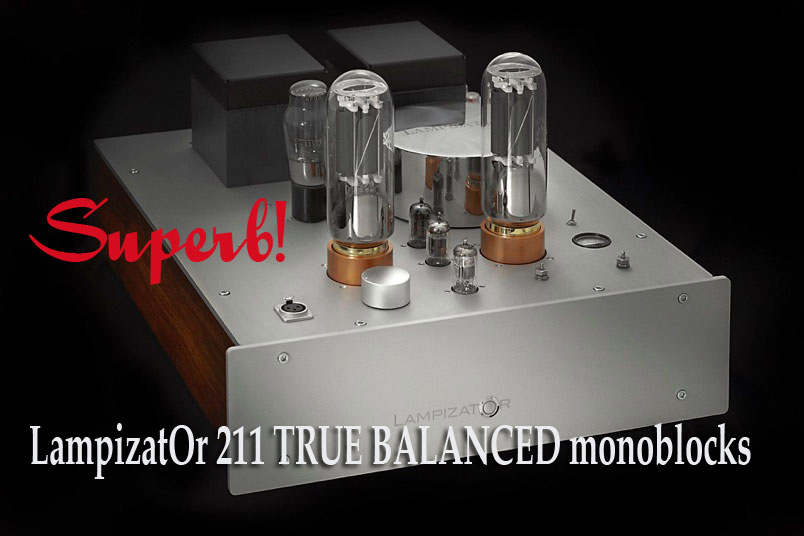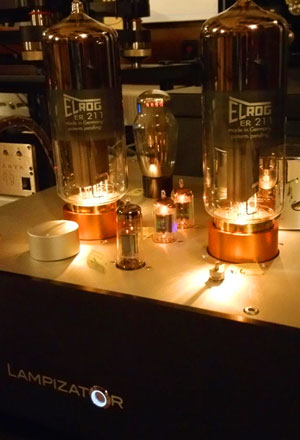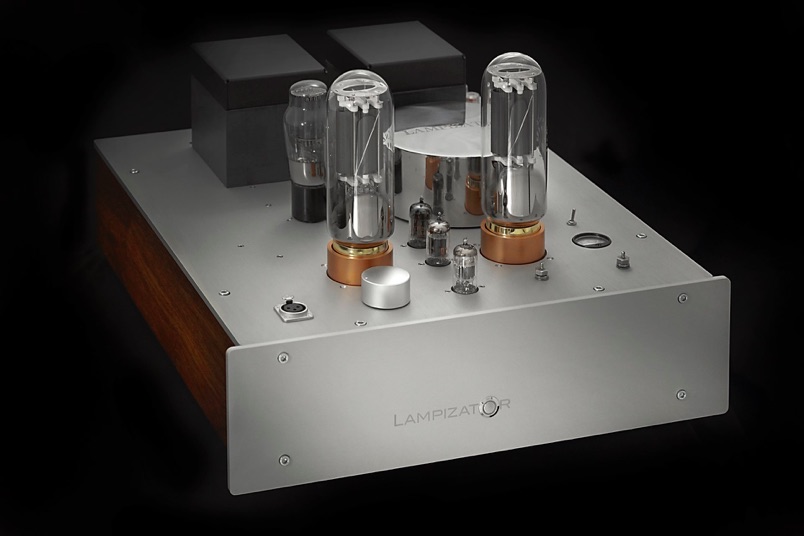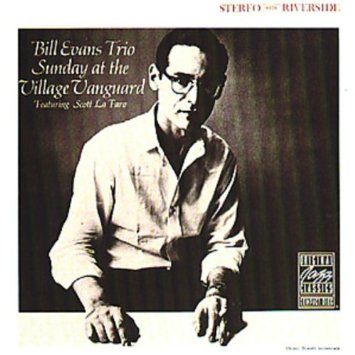LampizatOr 211 monoblock Amplifier

 LampizatOr is a Polish high-end audio manufacturer that was established in 2010, by brilliant audio designer Lukasz Fikus, who graduated from Warsaw Polytechnic University with a degree in electrical Engineering while specializing in power distribution and high voltage physics. He also has an MBA from WUT school of Business in Warsaw in association with the London school of Business. In March 2010, after 19 years of working for a giant multi-national engineering company, Lukasz decided to quit working in a corporate environment and stepped down from a position as a general manager. He says, “I wanted liberated myself.” In the early ’80’s Lukasz was involved in audio projects as a hobby. This eventually led to a full time commitment to where his passion genuinely lies today.
LampizatOr is a Polish high-end audio manufacturer that was established in 2010, by brilliant audio designer Lukasz Fikus, who graduated from Warsaw Polytechnic University with a degree in electrical Engineering while specializing in power distribution and high voltage physics. He also has an MBA from WUT school of Business in Warsaw in association with the London school of Business. In March 2010, after 19 years of working for a giant multi-national engineering company, Lukasz decided to quit working in a corporate environment and stepped down from a position as a general manager. He says, “I wanted liberated myself.” In the early ’80’s Lukasz was involved in audio projects as a hobby. This eventually led to a full time commitment to where his passion genuinely lies today.
I was first introduced to LampizatOr digital gear and electronics back in 2014 at the New York Audio Show. The LampizatOr was teamed up with Dale Pitcher, powering his Mosaic Acoustic Illumination loudspeakers and it produced a very involving sound that was truly impressive; it was transparent, open, and created a beautiful three-dimensional soundstage. I’m sure that whenever we hear the name LampizatOr, we think mostly of their excellent sounding DACs. But, did you know that LampizatOr also makes other great sounding electronics? For some time LampizatOr’s been getting rave reviews for their DACs and, yes, their DAC’s performance is reference quality. But lately, I have been intrigued to find out how their power amplifier performs.
I anticipate attending the Munich High End Show each May. This is where I get to reconnect with my friends and get to see the hottest products and meet new industry folks. At last year’s Munich show, I stopped by the LampizatOr room and stayed for a moment to listen hoping to talk with Lukasz Fikus. Unfortunately, I didn’t’ get to see him; instead I met Pawel Derkowski of LampizatOr. I told him I was very interested in reviewing the amplifier and he told me he would talk to Lukasz and get back to me. I kind of surprised him when I asked him if I could review an amplifier instead of their DACs. A couple of weeks after the Munich show I received an email from LampizatOr’s U.S representative. He told me he’d ordered the 211 True Balanced amplifiers for me to review.
 The 211 Amplifier True Balanced Class-A, push-pull mono block integrated amplifier that uses two Chinese 211 PSVANE triode tubes per chassis. This produces a powerful 85 watts per channel with zero negative feedback. It’s an amplifier with a stepped attenuator and an input ladder switch with 24 SMD resistor pairs. The NOS Ecc808s are used for input tubes, and NOS 5687s are used for driver tubes and my review pair was equipped with a solid-state rectifier (it is also available in a tube rectifier using a 5R4WGB tube). It’s a single-ended triode operation from input to output transformer. In conventional push-pull amplifiers, the phase splitter circuit divides the signal into two parts, positive and negative. But, cleverly, in the True Balanced amplifier the phase splitter circuit is not used; instead it utilizes a SET for both incoming and signal phases (input balanced source signal). It amplifies these signals independently with their full power intact. Ogonowski transformers are used for the output transformer and power transformers. These power transformers have a total capacity of 700 VA. The power supply has oversized transformers; separate transformers are used for each task, three in total per side: one for the 211’s and one for small tubes and one for all heaters. The small tubes have a choke supply, and the 211s have their own huge choke as well. It utilizes the shortest signal path possible; from XLR to pot, there is only 2 inches of silver wire and only 4 inches in total per phase. It goes from pot to first tube and from the first to the second tube and capacitor to the main tube without any additional wiring. Brilliantly, the True Balanced is equipped with analog bias meters so that power tube bias current is monitored. There is no need for triode matching and you can compensate for tube aging drift on power tubes. All of LampizatOr’s parts are meticulously selected after many hours of listening tests and are over-specified to perform well under their limits.
The 211 Amplifier True Balanced Class-A, push-pull mono block integrated amplifier that uses two Chinese 211 PSVANE triode tubes per chassis. This produces a powerful 85 watts per channel with zero negative feedback. It’s an amplifier with a stepped attenuator and an input ladder switch with 24 SMD resistor pairs. The NOS Ecc808s are used for input tubes, and NOS 5687s are used for driver tubes and my review pair was equipped with a solid-state rectifier (it is also available in a tube rectifier using a 5R4WGB tube). It’s a single-ended triode operation from input to output transformer. In conventional push-pull amplifiers, the phase splitter circuit divides the signal into two parts, positive and negative. But, cleverly, in the True Balanced amplifier the phase splitter circuit is not used; instead it utilizes a SET for both incoming and signal phases (input balanced source signal). It amplifies these signals independently with their full power intact. Ogonowski transformers are used for the output transformer and power transformers. These power transformers have a total capacity of 700 VA. The power supply has oversized transformers; separate transformers are used for each task, three in total per side: one for the 211’s and one for small tubes and one for all heaters. The small tubes have a choke supply, and the 211s have their own huge choke as well. It utilizes the shortest signal path possible; from XLR to pot, there is only 2 inches of silver wire and only 4 inches in total per phase. It goes from pot to first tube and from the first to the second tube and capacitor to the main tube without any additional wiring. Brilliantly, the True Balanced is equipped with analog bias meters so that power tube bias current is monitored. There is no need for triode matching and you can compensate for tube aging drift on power tubes. All of LampizatOr’s parts are meticulously selected after many hours of listening tests and are over-specified to perform well under their limits.
One Sunday afternoon the U.S rep Fred Ainsley called me to let me know that he was on his way to my Manhattan apartment with Lukasz Fikus from a New Jersey Audio Society meeting to drop off the 211 Amplifier True Balanced. As expected, I went downstairs and greeted both Smith and Fikus for being kind enough to drop the amplifiers off at my home. Impressively, the True Balanced 211’s were delivered in flight cases. It was during lunch at nearby Brookfield Park, where I got the chance to talk with Lukasz Fikus about his products. Unfortunately, due to time constraints, we didn’t get to hear the True Balanced 211’s in my system, but I did manage to bring the amplifiers to my apartment and unpack them all by myself (although it is really a two-man job). Each mono amplifier was packed professionally in a flight case with wheels and the tubes were packed nicely in a separate compartment. The tubes were marked for easy installation. The 211 Amplifier True Balanced was used to drive my reference Conspiracy loudspeakers and the Thrax Lyra loudspeakers as well in place of my Thrax Teres mono amplifiers and Thrax Dinoysos preamplifier. The 211s performed wonderfully, with or without a preamplifier. I did my evaluations mostly as an integrated amplifier.

The 211 Amplifier True Balanced has the distinct LampizatOr appeal. It has a utilitarian look with transformers in the rear of the real estate where the attractive 211 tubes reside in front of the amplifier. I should mention that the 211 tubes are particularly lovely when powered up. There’s an XLR balanced input on the top front left and a volume control knob in front of the left 211 tube. Biasing was simple and no tools were needed. You can bias using the analog bias meter on the top front right side of the amplifier by moving the toggle switch, to select right or left tubes and then adjusting the bias with the knob. The main power on/off switch is in the rear of the 211 and in the center front switch is a pre-heating operation mode for the tubes.
Fortunately, the 211s were already burned in so the amplifier was ready for serious listening. But I decided to allow them to burn in for a few days after delivery. Once settled in, a 15-minute warm-up from cold seemed sufficient for it to reach a good operating plateau. When I started listening, almost right away, they put a big smile on my face. Lately, I’ve been fortunate to listen to many excellent sounding tube amplifiers and to my ears the 211 is as impressive as anything else I’ve experienced in my space. The voices and instruments sounded very tangible, with high level of timbre purity. Music of all kinds flowed with effortless liquidity. It was full and warmhearted and, at the same time, convincing by virtue of its dynamic authority, resolution, and superb integration.
 The midrange was exceptionally open, revealing, and colorful. The treble was very extended, reproduced cleanly and with an airy high-frequency extension, which was delicately sweet. With this strong inner purity, it conveyed music with liveliness and speed, but with no hardness or compression. It sounded rich and sweet, with no attendant loss of speed or sparkle in the treble. Listening to Tchaikovsky’s Variations on a Rococo Theme, Op33, for cello and orchestra (EMI 7243 5 56126 2 5), performed by Han-na Chang with maestro Mstislav Rostropovich conducting the London Symphony Orchestra was thrilling. The 211’s portrayal of the orchestra is exemplary; the strings, woodwinds, and horns were palpable, detailed with very involving emotion, revealing layers of small detail and nuance that were outstanding. Chang’s performance was breathtaking; she was only thirteen when this work was performed and she was able to express her feelings with the maturity and emotion of a sophisticated adult. The 211 brought out her musicality at an extraordinary level.
The midrange was exceptionally open, revealing, and colorful. The treble was very extended, reproduced cleanly and with an airy high-frequency extension, which was delicately sweet. With this strong inner purity, it conveyed music with liveliness and speed, but with no hardness or compression. It sounded rich and sweet, with no attendant loss of speed or sparkle in the treble. Listening to Tchaikovsky’s Variations on a Rococo Theme, Op33, for cello and orchestra (EMI 7243 5 56126 2 5), performed by Han-na Chang with maestro Mstislav Rostropovich conducting the London Symphony Orchestra was thrilling. The 211’s portrayal of the orchestra is exemplary; the strings, woodwinds, and horns were palpable, detailed with very involving emotion, revealing layers of small detail and nuance that were outstanding. Chang’s performance was breathtaking; she was only thirteen when this work was performed and she was able to express her feelings with the maturity and emotion of a sophisticated adult. The 211 brought out her musicality at an extraordinary level.
 The 211 produced the rich harmonic palette expected from tubes with the naturalness, particularly its portrayal of instrumental attacks and decays, close to what I’ve heard in live performances. To my ears tube amplifiers have an uncanny ability to produce an outstanding soundstage, and the 211 convincingly produced a three-dimensional and voluminous space. In addition, soundstaging was lifelike both in tone and size and as a result quite engaging . Listening to one of my favorite recordings of Bill Evans’ Sunday at the Village Vanguard (JVCXR-0051-2) produced floor-to-ceiling, wall-to-wall spaciousness, and a compellingly three-dimensional soundstage that was startlingly natural. Paul Motian’s magical shimmering cymbals sounded delicate without being solid-state hard or tube soft. Bill Evans’ piano was simply brilliant; it was articulate with solidity and weight. Scott LaFaro’s double bass was wonderfully rich, full, lively and natural. The attack, sustain, and decay of all three instruments was rendered gracefully with as beautiful a timbre as you might hear live.
The 211 produced the rich harmonic palette expected from tubes with the naturalness, particularly its portrayal of instrumental attacks and decays, close to what I’ve heard in live performances. To my ears tube amplifiers have an uncanny ability to produce an outstanding soundstage, and the 211 convincingly produced a three-dimensional and voluminous space. In addition, soundstaging was lifelike both in tone and size and as a result quite engaging . Listening to one of my favorite recordings of Bill Evans’ Sunday at the Village Vanguard (JVCXR-0051-2) produced floor-to-ceiling, wall-to-wall spaciousness, and a compellingly three-dimensional soundstage that was startlingly natural. Paul Motian’s magical shimmering cymbals sounded delicate without being solid-state hard or tube soft. Bill Evans’ piano was simply brilliant; it was articulate with solidity and weight. Scott LaFaro’s double bass was wonderfully rich, full, lively and natural. The attack, sustain, and decay of all three instruments was rendered gracefully with as beautiful a timbre as you might hear live.
Mostly, I used the Conspiracy loudspeakers for this review but I was curious to see how 211s would drive my new Lyra loudspeakers, which are 2 dB less sensitive than my Conspiracies and require a lot more power to drive. Listening to orchestral music was outstanding as the 211s drove the Lyra loudspeakers with power and authority without losing any of the integrity of the music. The 211s’ was able to scale the dramatics and powerful heights of the full orchestral crescendos with great ease. The bass was big and tuneful with a high level of definition that ensured good articulation on complex bass lines. Truth be told, I noticed the Teres did handle the Lyras with a touch better bass, and precision and control. Otherwise, the 211s performed outstandingly well for a tubed amplifier.
The 211 Amplifier True Balanced worked flawlessly during the entire listening period, with no drift in tube bias. The fabulous sound delivered by this exceptional amplifier puts it on the front line, up there with the best amplifiers. Better yet, the LampizatOr manages to offer the 211s at more accessible prices by a direct sales approach and they are able to cut costs by sharing half of their parts with their DACs. They incorporate the front panel, the caps, sockets, small tubes and all input and driver circuits and supplies. (The amps have a part count of 330). The LampizatOr is able to offer the 211 Amplifier True Balanced the very reasonable price of $ 12,995. Don’t get me wrong. It’s a lot of money but in today’s exorbitantly priced world of audio it’s a safe bet to call this affordable. Not only does LampizatOr produce exceptional sounding DACs, they also make a superb sounding amplifier. Now, the bad news is that others definitely have to up their game in order to compete with the 211s’ performance at their asking price. The 211 Amplifier True Balanced is highly recommended and as a result, I voted this gem as a Most Wanted Component!


key kim
Specification:
Price: $12,995
• Single Ended triode in mirror mode – TRUE BALANCED, mono block integrated amp (no need for a preamp)
• Dimensions: WHD : 450 x 140 (250 with tubes) x 600 mm
• Weight: net 33 kg per each mono before packing (39,5 kg packed)
• Gross shipping weight of a pair: 80 kg (190 lbs)
• Power: 85 WPC, pure class A
• Power consumption: 195 WPC on idle per channel,
• 95 W on pre-heating (per each block)
• Power Tubes: 211 triode
• Driver: White config 5687 – NOS
• Input tube Ecc808 – NOS
• Rectifier tube 5R4WGB
• Input impedance: 90 K x2
• Output impedance (speakers recommended) 8 Ohm
• Output transformer: OGONOWSKI / LampizatOr Push Pull
• High Voltage transformer: Ogonowski (using audio output transformer core )
• Biasing: manual (with exposed pot and meter)
• Volume: Stepped input ladder switch (24 SMD resistor pairs)
• Power transformers total capacity: 700 VA. 3 transformers in total
• Rectification: two separate rectifiers for High Voltage- one for 900 V (silicon) and one for 400 V (5c3s tube)
• Anode supply: 900 V DC
• Available front colors: black or silver (top always silver)
• Input topology: one XLR and no SE. SE input is not possible at all.
• Biasing range: -30 to -140 V DC (covers all 211 types)
• Mains transformers also covers now 110 V countries.
Lukasz Fikus Private
Brzozowa 26A
05-552 Warszawianka
Poland
Phone +48697994716
Website: www.lampizator.eu
Email: lampizator@lampizator.eu
skype: Lampizator
Stereo Times Masthead
Publisher/Founder
Clement Perry
Editor
Dave Thomas
Senior Editors
Frank Alles, Mike Girardi, Russell Lichter, Terry London, Moreno Mitchell, Paul Szabady, Bill Wells, Mike Wright, and Stephen Yan,
Current Contributors
David Abramson, Tim Barrall, Dave Allison, Ron Cook, Lewis Dardick, John Hoffman, Dan Secula, Don Shaulis, Greg Simmons, Eric Teh, Greg Voth, Richard Willie, Ed Van Winkle, Rob Dockery, Richard Doran, and Daveed Turek
Site Management Clement Perry
Ad Designer: Martin Perry





Be the first to comment on: LampizatOr 211 monoblock Amplifier